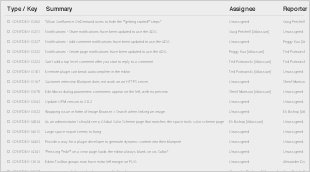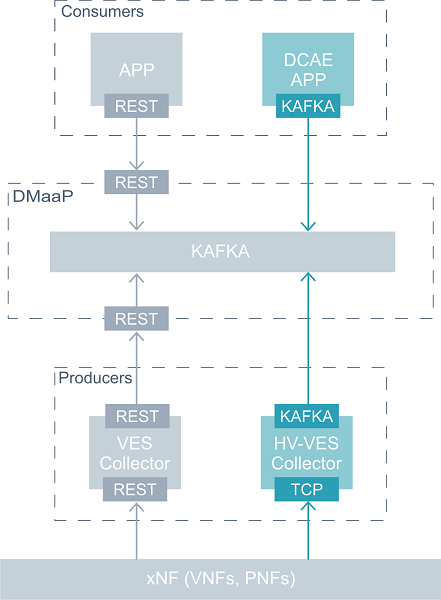
Byung-Woo Jun, Fiachra Corcoran
DMaaP Message Router utilizes an HTTP REST API to service all Publish and Consume transactions. HTTP and REST standards are followed so clients as varied as CURL, Java applications and even Web Browsers will work to interact with Message Router.
Message Router uses AAF for user’s authentication and authorization.
The MessageRouter service has no requirements on what publishers can put onto a topic. The messages are opaque to the service and are treated as raw bytes. In general, passing JSON messages is preferred, but this is due to higher-level features and related systems, not the MessageRouter broker itself.
The current message router implementation does not give the receiver control over commits, severely limiting the bus semantics and the performance of the bus.
The current message router implementation does not give the producer the capability of choosing a partition key per message in case of group sending
The ONAP AAF security model is bespoke to ONAP, which means off-the-shelf components from other communities generally cannot integrate. This is not a DMaaP problem but will have an impact on the target architecture if not addressed.
The topic administration in ONAP does not offer the capability of configuring the topic retention.
There are some considerations needed for secure, low-latency access to data.
The message router exposes a subset of the Kafka semantics and has a client aware architecture relying on zookeeper to “move” a Kafka adapter related to a consumer from one server to another. It does not support acknowledges - messages are acknowledged upon successful reply to a GET. If a client crashes straight after receiving a reply at least once semantics are broken. This makes message router in its current form unsuitable for mission critical data and control flows.
Deployment of Kafka - does adopting a component such as Strimzi add any value in terms of configurability etc?
Security: evolving ONAP towards supporting OAuth 2 natively would allow every component including Kafka to provide authentication. Requires a broader analysis.
Message router API: the principles for having a technology agnostic lightweight message API are good. However these days there are more options in the open source ecosystem which support a broader range of the Kafka semantics - should we consider aligning with one of those:
Strimzi looks like a suitable candidate, propose analysis in two aspects:

Some analysis output here
Native broker API: for low-latency, high volume use cases, how do we securely expose native Kafka APIs?
HV-VES supports reading / writing directly from Kafka: https://docs.onap.org/projects/onap-dcaegen2/en/latest/sections/services/ves-hv/architecture.html

Integration with external storage systems